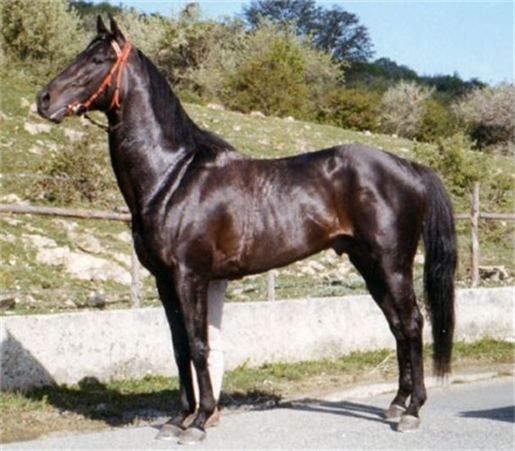Type the name of the breed you're looking for below
[wpdreams_ajaxsearchlite] Don't see the breed your're looking for? Click here and let us know!
Sardinian Anglo-Arab horse
| Country Of Origin | Italy |
| History and Background | It is not known how the first horses came to Sardinia, but there are several theories as to the breed’s ancestors. The most commonly believed theory suggests that the original bloodlines came from Asia via Greek imports in the 4th and 5th centuries BC. Subsequent invasions brought new blood to the island but breeding was fairly controlled, although some Arabian and Andalusian infusions were allowed. In 1874 The Ozieri Army Remount Station was established to supply mounts for the cavalry units of the Italian Army. To produce horses suitable for the cavalry, indigenous Sardinian mares were crossed with oriental-bred stallions such as the foundation sire Osmanié, and, starting from 1883, also with French-bred Anglo-Arabian stallions. In 1915, captain Grattarola, director of the Ozieri Remount Station, continued the work by crossing the best 600 available mares with stallions of Purosangue Orientale breeding, using as his founding stallions Abbajan Sciarragh, Talata u Kamsin and Etnen u Kamsin, which had all been purchased directly from Bedouin desert tribes. Later on, Thoroughbred stallions started to be utilized on the mares of mixed Sardinian and oriental ancestry. One such Thoroughbred stallion was Rigogolo (son of Havresac II). A goal of a minimum of 25% Arabian blood was set. In 1967 the breed was officially named “Anglo-Arabo Sardo” (abbreviated in AAS). Lately the suffix "sardo" has been dropped and the breed is increasingly being promoted as an Anglo-Arabian horse. |
| Use Today | Trekking, Riding horse, Show horse |
| Height | 15.2–16.3 hands (62–67 inches, 157–170 cm) high. |
| Colour | Most commonly bay, sorrel and grey |
| Characteristics | In Cavalry trials it was able to cover 100 kilometers per day for several days. Head is light and short with a straight profile Wide eyes and large nostrils Ears are small and mobile Neck is light and well attached Chest is ample and muscular Sloped shoulder Legs are strong, but not heavy Hooves are well-proportioned |
| Personality and Temperament | They are known to be intelligent, but can be also stubborn and often have a fiery temper. |
| Other Considerations | There is also a smaller native horse called the Giara horse, which is thought to have developed from Numidian (North African-possibly Barb) stock brought to the island by the Carthaginians in pre-Roman times. It is these native horses that crossed first with Arabians and then Thoroughbreds, that provided the local foundation bloodstock that contributed to the creation of the Sardinian Anglo-Arab. The Government remount station in Ozieri is now crossing the Giara Horse with Arabians, Small AAS and even German riding Ponies in an effort to produce a pony ideally suited to equestrian sports, and is creating the "Giarab" pony breed. Many specimens of AAS are contributing to the foundation bloodstock of a new breed, named the "Sella Italiano" or Italian Saddle Horse. Since the 1960s the AAS has proven itself in the sport of eventing and has also established itself as a racehorse and a steeplechaser. In 1990, Ostenda, an AAS horse won the Grand Prix des Pouliches in Tarbes, and the mare Vituliana repeated this feat in 1997. Vidoc, an AAS stallion, placed first in the Prix du Ministere in 1997. The majority of horses competing in the Palio di Siena belong to the Anglo Arabo Sardo breed. They replaced the Thoroughbred for racing in the Palio di Siena after several horses had fractured their legs in the tight turns of the Siena Square, so they were replaced by the shorter and sturdier breed whose legs can better withstand the stress of the race. This horse also plays an important role in the folk festivals of Sardinia's horse culture such as the Sartiglia di Oristano, The Cavalcata Sarda and the Ardia di Sedilo. Several specimens are used by mounted regiments of the Carabinieri police force, continuing the tradition of the breed as a cavalry horse. |



